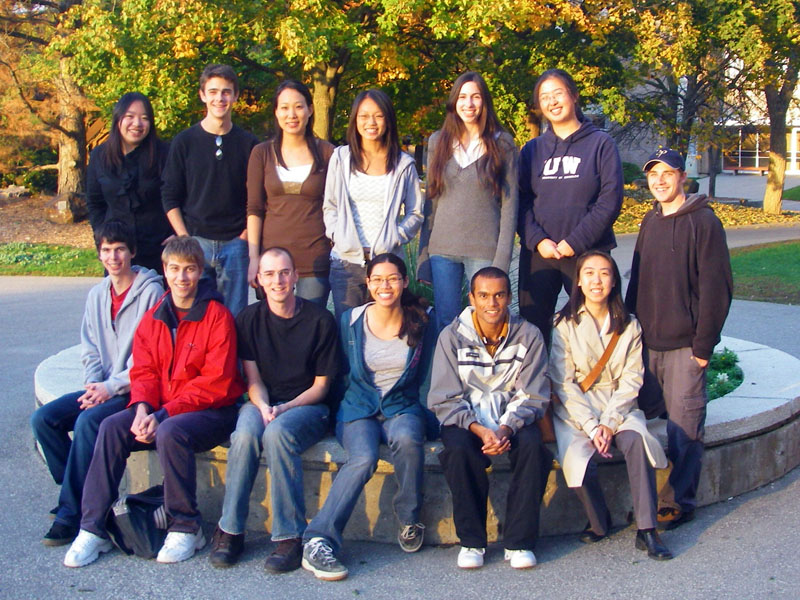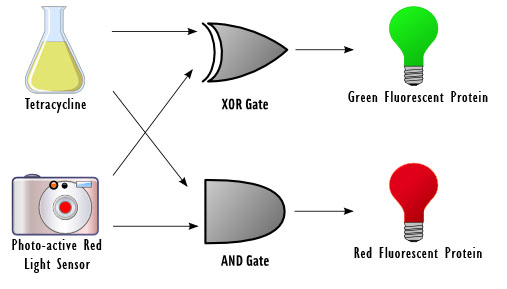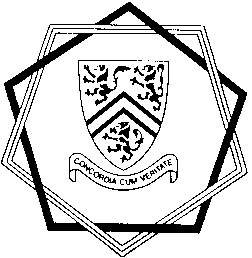Waterloo
From 2007.igem.org
(Difference between revisions)
| Line 24: | Line 24: | ||
| colspan="2" style="vertical-align:top; border-bottom-width:thin; border-bottom-color:black; border-bottom-style:solid; padding:5px" | The goal of this project is to design a basic device for computing. Our idea was to reproduce a circuit element called a half adder with DNA, which takes in two 1-bit inputs, adds them, and outputs a sum and a carry. Our device responds to two inputs: red light and the chemical tetracycline. The input sensors control a set of genetic switches in order to carry out the computation and fluoresces green and/or red depending on the outcome. | | colspan="2" style="vertical-align:top; border-bottom-width:thin; border-bottom-color:black; border-bottom-style:solid; padding:5px" | The goal of this project is to design a basic device for computing. Our idea was to reproduce a circuit element called a half adder with DNA, which takes in two 1-bit inputs, adds them, and outputs a sum and a carry. Our device responds to two inputs: red light and the chemical tetracycline. The input sensors control a set of genetic switches in order to carry out the computation and fluoresces green and/or red depending on the outcome. | ||
| - | Half adders are an essential component in a device called the Arithmetic Logic Unit (ALU), | + | Half adders are used as building blocks for full adders. They are also an essential component in a device called the Arithmetic Logic Unit (ALU), a fundamental building block for the central processing unit (CPU) in a modern computer. ALUs perform simple and complex operations such as bitwise logical operations (i.e. AND, OR, NOT) and mathematical operations. |
| colspan="2" style="border-bottom-width:thin; border-bottom-color:black; border-bottom-style:solid; padding:5px; vertical-align:middle" | [[Image:Design schematic.jpg|center|400px|Schematic Design of Biological Half-Adder]] | | colspan="2" style="border-bottom-width:thin; border-bottom-color:black; border-bottom-style:solid; padding:5px; vertical-align:middle" | [[Image:Design schematic.jpg|center|400px|Schematic Design of Biological Half-Adder]] | ||
Revision as of 20:24, 26 October 2007

| Our Project | |||
| Abstract | |||
| The goal of this project is to design a basic device for computing. Our idea was to reproduce a circuit element called a half adder with DNA, which takes in two 1-bit inputs, adds them, and outputs a sum and a carry. Our device responds to two inputs: red light and the chemical tetracycline. The input sensors control a set of genetic switches in order to carry out the computation and fluoresces green and/or red depending on the outcome.
Half adders are used as building blocks for full adders. They are also an essential component in a device called the Arithmetic Logic Unit (ALU), a fundamental building block for the central processing unit (CPU) in a modern computer. ALUs perform simple and complex operations such as bitwise logical operations (i.e. AND, OR, NOT) and mathematical operations. | |||
| Project Design | Mathematical Modelling | Construction and Testing | Future Work |
|
|
|
|







